
Visiting the famous Mujica neighborhood -EN-ES-
The Mujica neighborhood, also known as Villa 31, is one of the oldest and most emblematic settlements in Buenos Aires. Located in the Retiro area, this neighborhood is known for its vibrant community, its spirit of resilience and the stories that weave through its narrow, colorful streets.
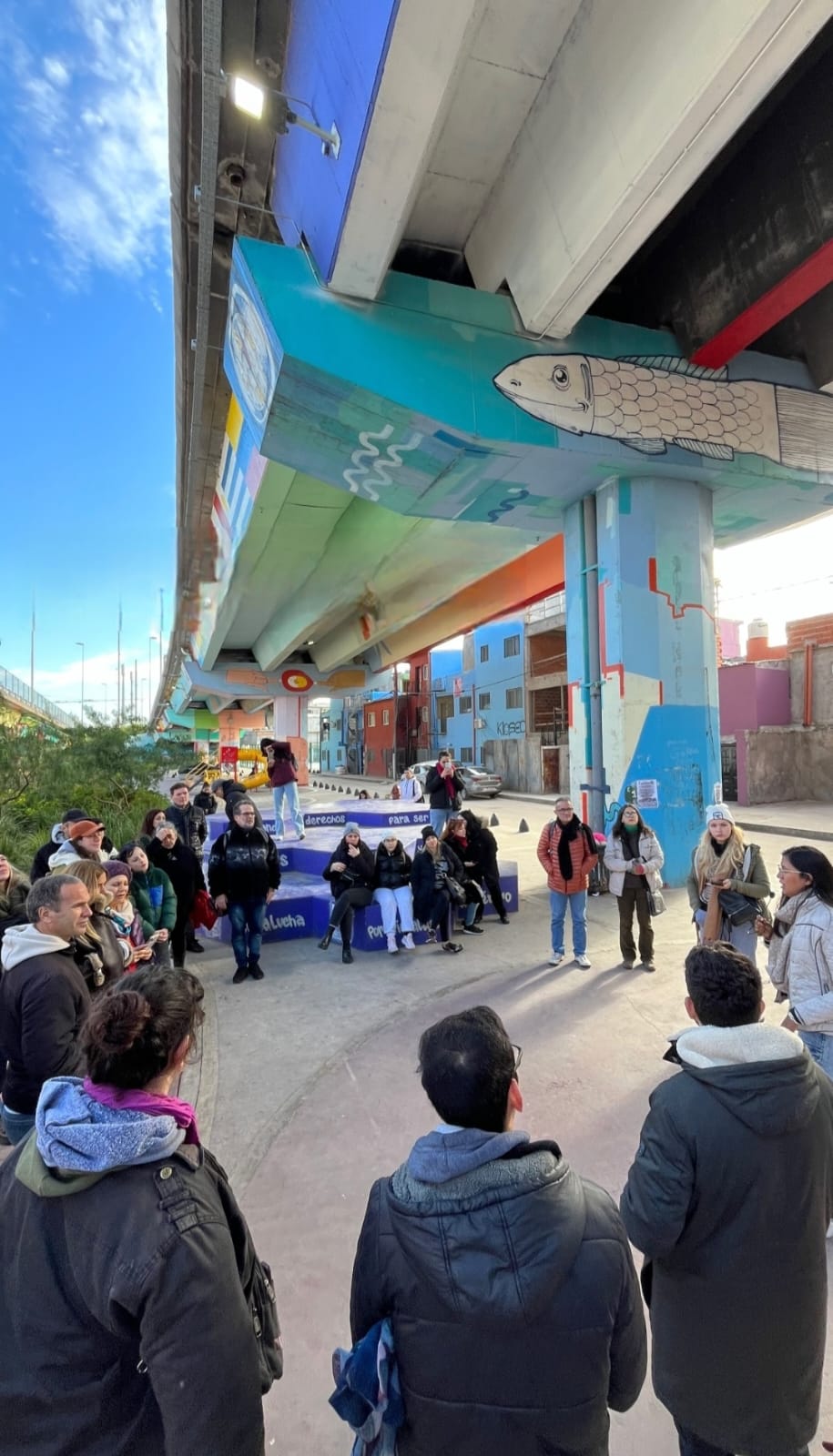
On my recent visit to Mujica, I encountered a number of curiosities that made my experience unforgettable. From the moment we arrived, the daily life of the neighborhood unfolded before us in all its authenticity. The streets, although narrow and sometimes labyrinthine, were full of life and color. The murals on the walls told stories of struggle and hope, reflecting the rich culture and creativity of its inhabitants.
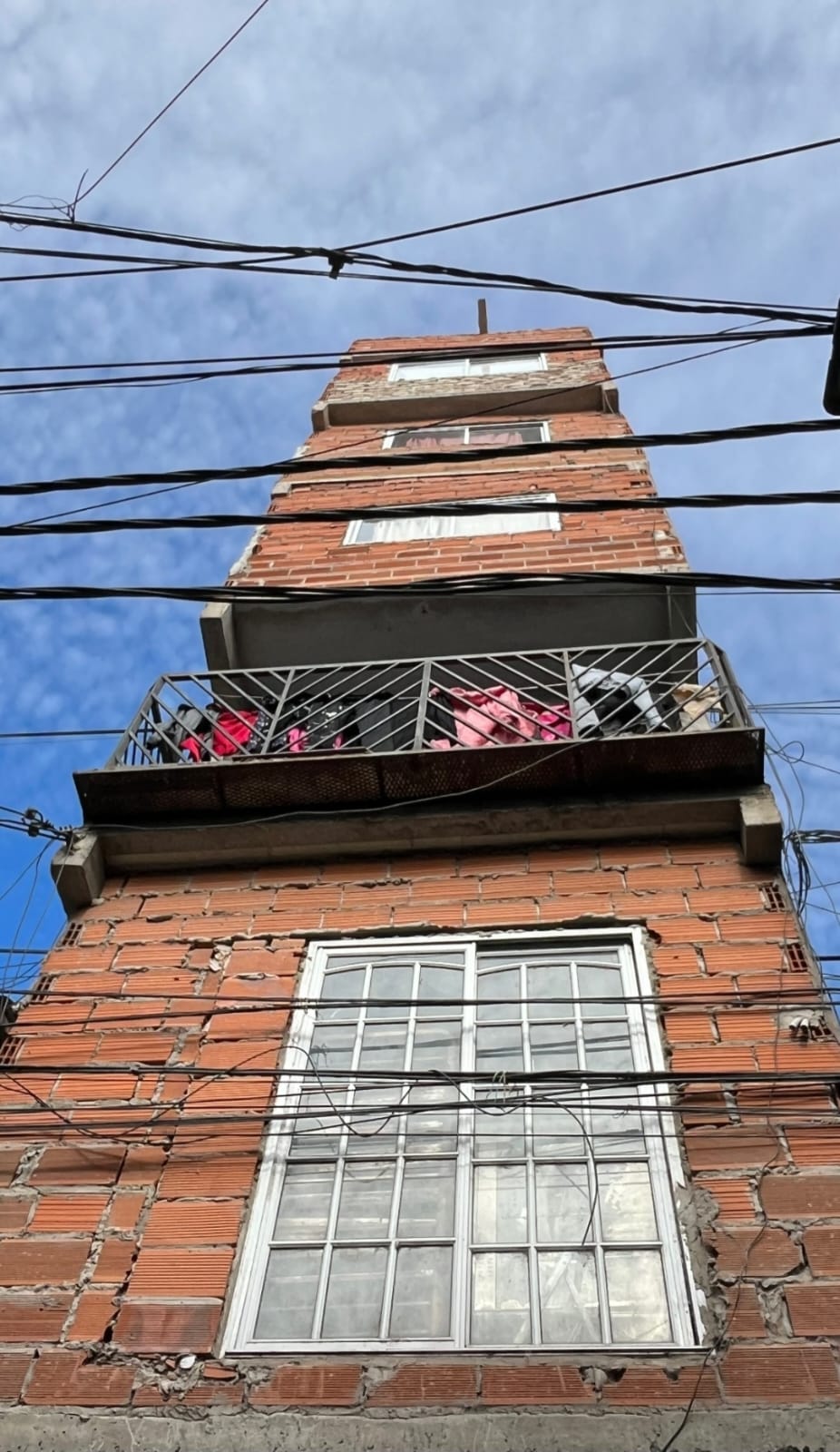
One of the most surprising things I encountered was seeing chickens on a balcony. It was an image I did not expect to find in the heart of Buenos Aires, but there they were, comfortably perched among potted flowers and plants. This scene, so unusual in the city, reminded me of the resilience and self-sufficiency of the Mujica community. The residents have created an environment where urban and rural elements are combined, reflecting their ingenuity and ability to cope with adversity.
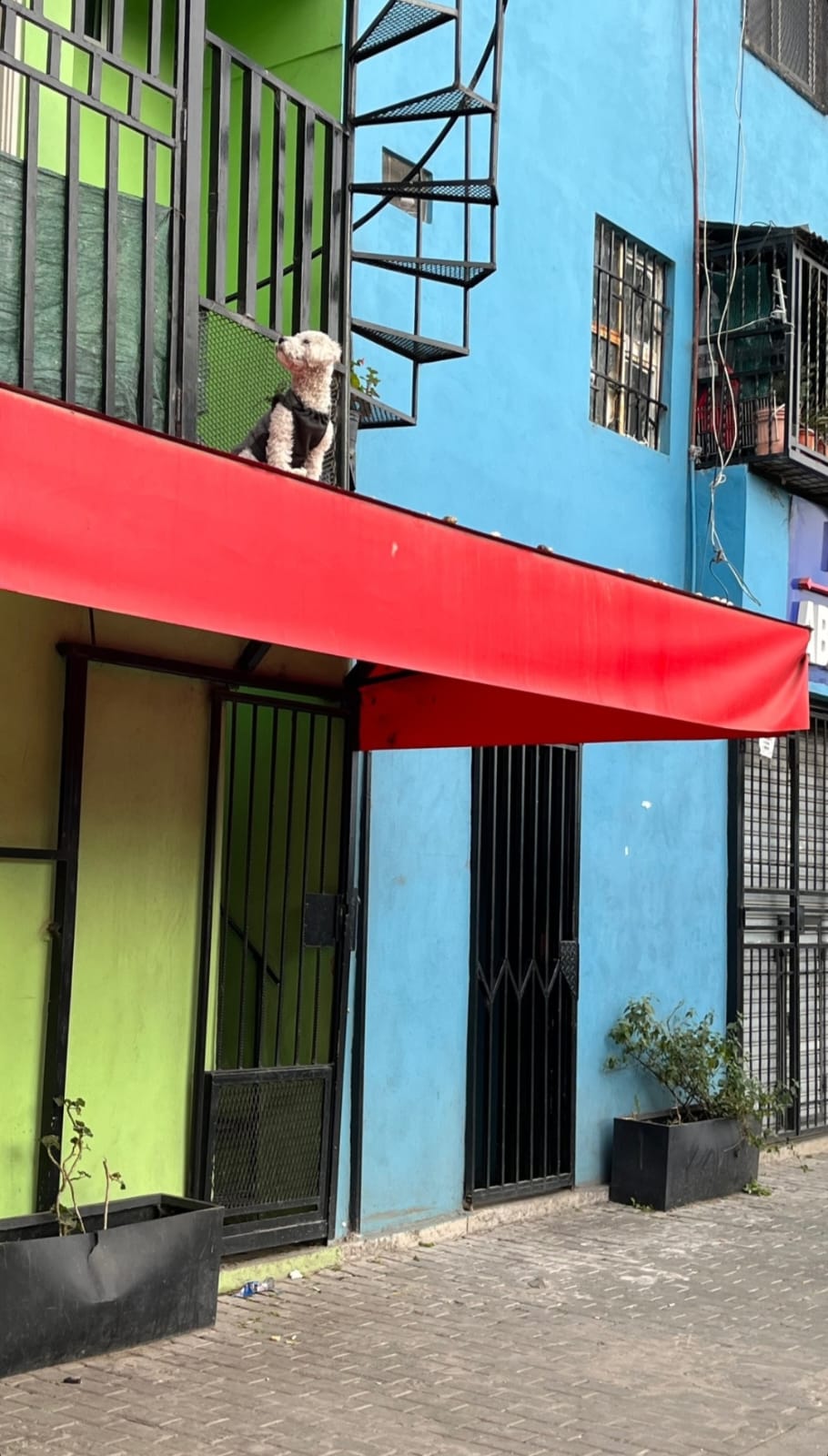
Our main goal in visiting Mujica was to go to Las Palmeras, a restaurant known for serving some of the best Peruvian food in Buenos Aires. Located in the heart of the neighborhood, Las Palmeras is a testament to the multiculturalism and diversity that characterizes Mujica. Upon arrival, we were greeted by a warm and welcoming atmosphere. The restaurant, though modest, was full of local and visiting customers who came to enjoy its famous cuisine.
The meal at Las Palmeras was, without a doubt, one of the highlights of the visit. We started with fresh ceviches, whose acidity and freshness awakened our senses. The anticuchos, beef heart skewers marinated and grilled to perfection, were a delight. Each dish was prepared with care and reflected Peru's rich culinary tradition. In addition to the food, the service was exceptional. The friendly and attentive owners shared with us stories about the history of the restaurant and their commitment to the community.
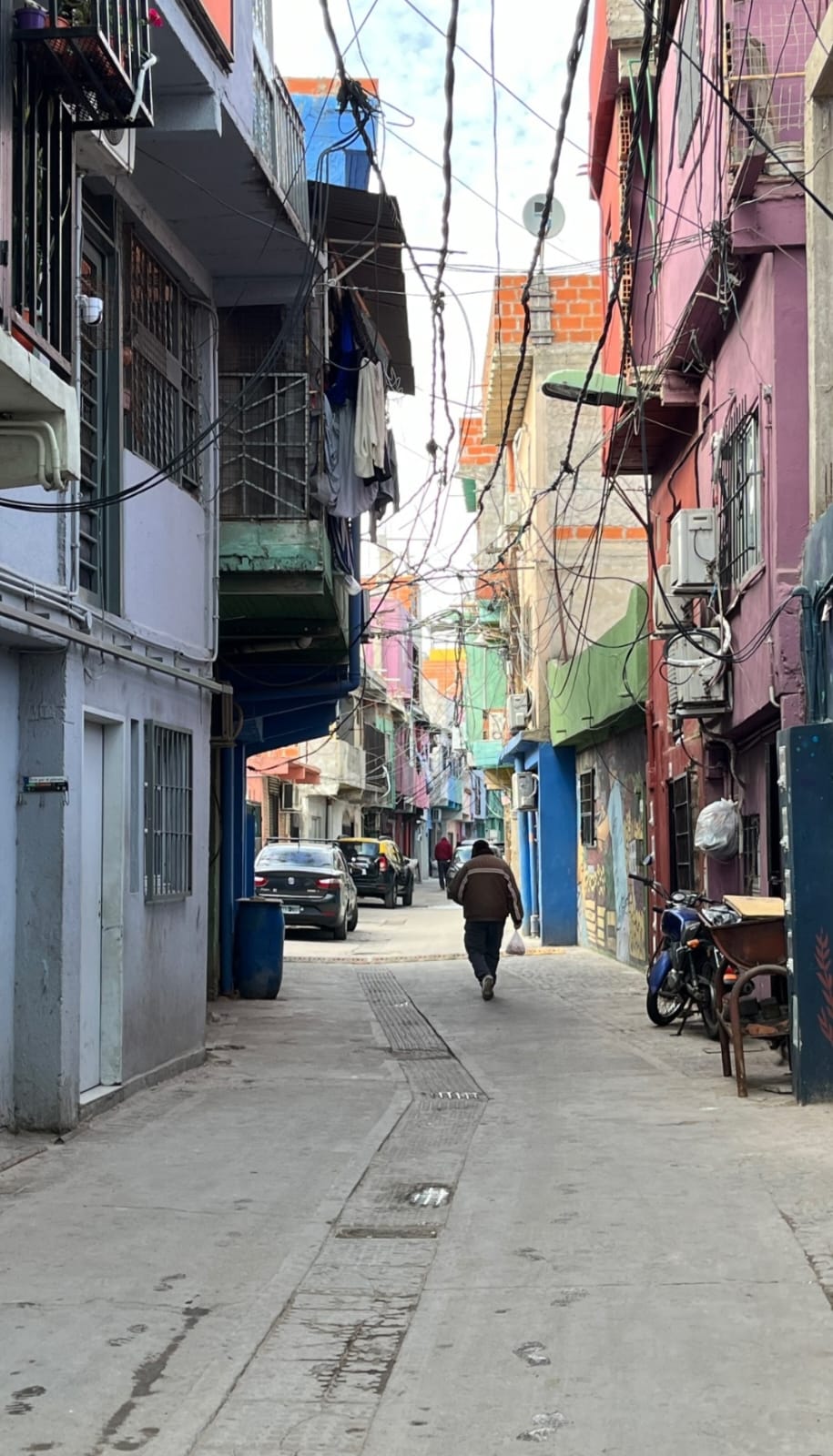
As we walked around the neighborhood after our meal, we noticed the presence of several community initiatives. Cultural centers, schools and worker cooperatives are an integral part of Mujica. These spaces not only provide essential services, but also foster a sense of community and belonging among residents. Despite the challenges, the people of Mujica have found ways to create an environment where solidarity and collaboration are fundamental.

Another thing that caught my attention was the music. On every corner, there was someone playing a guitar, singing or just enjoying the music that resonated in the air. Music, like art, is a vital part of life in Mujica. It reflects the cultural diversity of the neighborhood and offers a form of expression that brings people together.
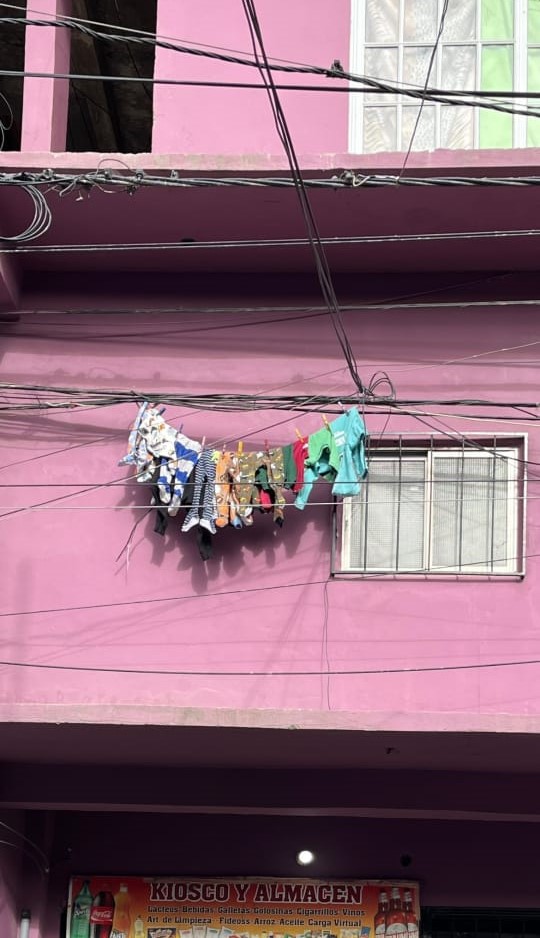
As the sun began to set, we came across a group of children playing in a plaza. Their laughter and games reminded us of Mujica's vitality and indomitable spirit. Despite being one of the most humble neighborhoods in Buenos Aires, Mujica is a place full of life, hope and determination. The community here has built a home where adversity is met with creativity and where diversity is celebrated.
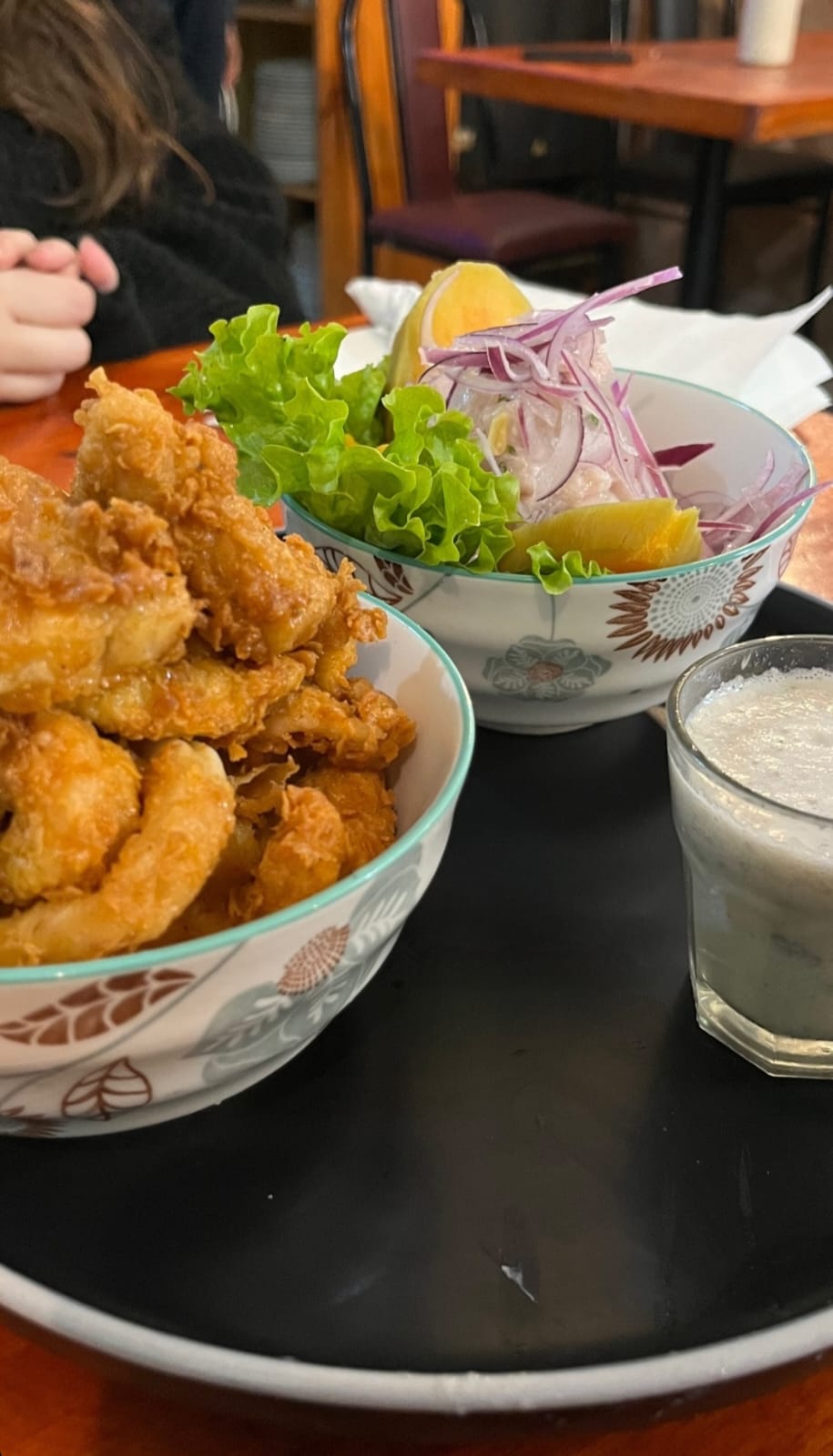
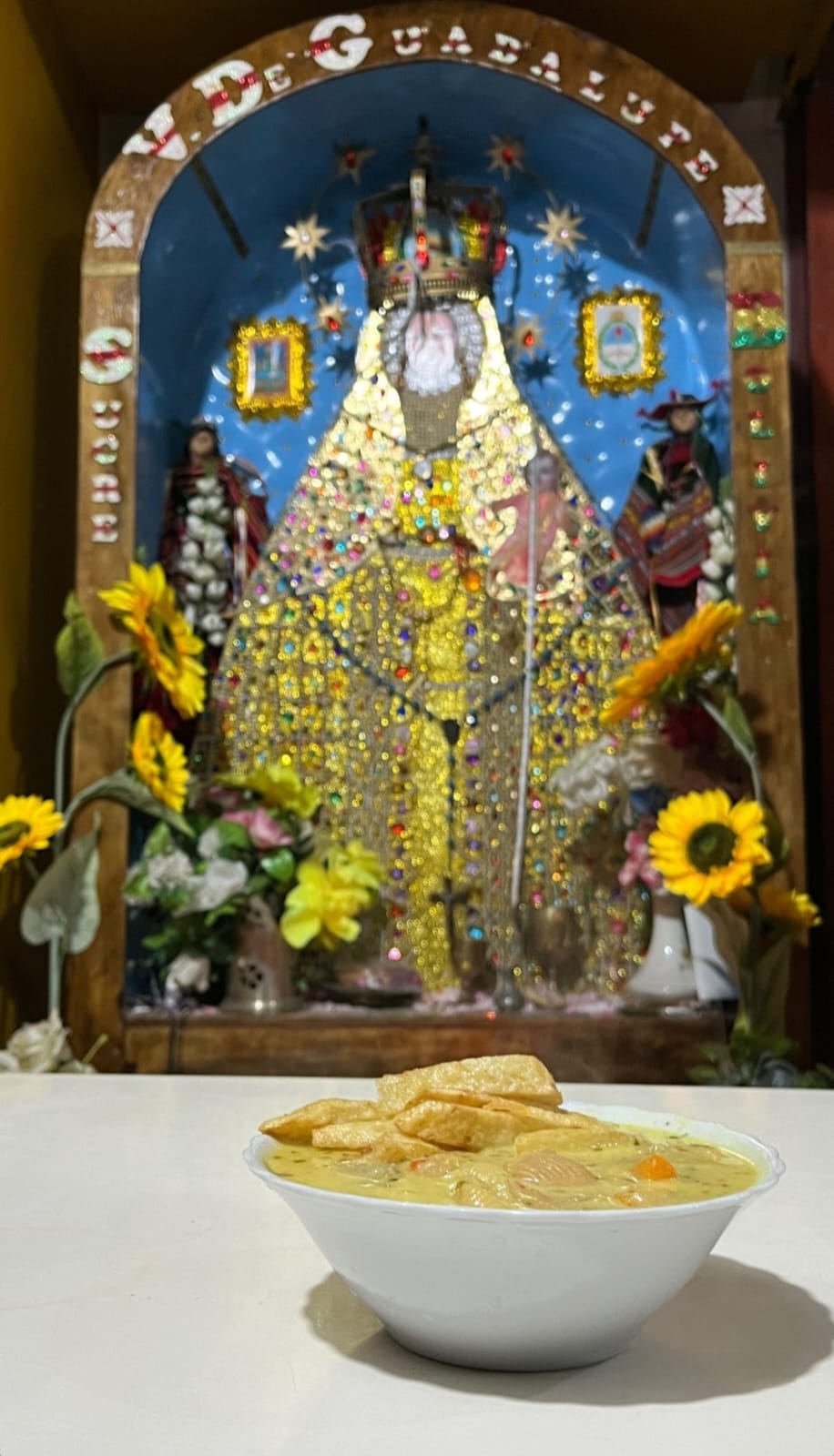
My visit to Mujica was an experience that left a deep impression on me. From the chickens on the balcony to the delicious food at Las Palmeras, every moment was a lesson in resilience and the human spirit. Mujica is a testament to what can be accomplished when a community unites and works together, facing challenges with courage and optimism.
Spanish version
El barrio Mujica, también conocido como Villa 31, es uno de los asentamientos más antiguos y emblemáticos de Buenos Aires. Ubicado en la zona de Retiro, este barrio es conocido por su comunidad vibrante, su espíritu de resiliencia y las historias que se entrelazan en sus calles angostas y coloridas.

En mi reciente visita a Mujica, me encontré con una serie de curiosidades que hicieron que mi experiencia fuera inolvidable. Desde el momento en que llegamos, la vida cotidiana del barrio se desplegó ante nosotros con toda su autenticidad. Las calles, aunque estrechas y a veces laberínticas, estaban llenas de vida y color. Los murales en las paredes contaban historias de lucha y esperanza, reflejando la rica cultura y la creatividad de sus habitantes.

Una de las cosas más sorprendentes que encontré fue ver gallinas en un balcón. Era una imagen que no esperaba encontrar en el corazón de Buenos Aires, pero allí estaban, cómodamente posadas entre macetas de flores y plantas. Esta escena, tan inusual en la ciudad, me recordó la capacidad de adaptación y la autosuficiencia de la comunidad de Mujica. Los residentes han creado un entorno donde se combinan elementos urbanos y rurales, reflejando su ingenio y capacidad para hacer frente a las adversidades.

Nuestro objetivo principal al visitar Mujica era ir a Las Palmeras, un restaurante conocido por servir una de las mejores comidas peruanas de Buenos Aires. Situado en el corazón del barrio, Las Palmeras es un testimonio del multiculturalismo y la diversidad que caracteriza a Mujica. Al llegar, nos recibió un ambiente cálido y acogedor. El restaurante, aunque modesto, estaba lleno de clientes locales y visitantes que venían a disfrutar de su famosa cocina.
La comida en Las Palmeras fue, sin duda, uno de los puntos culminantes de la visita. Comenzamos con unos ceviches frescos, cuya acidez y frescura despertaron nuestros sentidos. Los anticuchos, brochetas de corazón de res marinadas y asadas a la perfección, fueron una delicia. Cada plato estaba preparado con esmero y reflejaba la rica tradición culinaria de Perú. Además de la comida, el servicio fue excepcional. Los dueños, amables y atentos, compartieron con nosotros historias sobre la historia del restaurante y su compromiso con la comunidad.

Mientras caminábamos por el barrio después de nuestra comida, notamos la presencia de varias iniciativas comunitarias. Centros culturales, escuelas y cooperativas de trabajo son parte integral de Mujica. Estos espacios no solo brindan servicios esenciales, sino que también fomentan un sentido de comunidad y pertenencia entre los residentes. A pesar de los desafíos, la gente de Mujica ha encontrado maneras de crear un entorno donde la solidaridad y la colaboración son fundamentales.

Otra cosa que llamó mi atención fue la música. En cada esquina, había alguien tocando una guitarra, cantando o simplemente disfrutando de la música que resonaba en el aire. La música, al igual que el arte, es una parte vital de la vida en Mujica. Refleja la diversidad cultural del barrio y ofrece una forma de expresión que une a las personas.

A medida que el sol comenzaba a ponerse, nos encontramos con un grupo de niños jugando en una plaza. Sus risas y juegos nos recordaron la vitalidad y el espíritu indomable de Mujica. A pesar de ser uno de los barrios más humildes de Buenos Aires, Mujica es un lugar lleno de vida, esperanza y determinación. La comunidad aquí ha construido un hogar donde la adversidad se enfrenta con creatividad y donde la diversidad es celebrada.


Mi visita a Mujica fue una experiencia que me dejó una profunda impresión. Desde las gallinas en el balcón hasta la deliciosa comida en Las Palmeras, cada momento fue una lección sobre la resiliencia y el espíritu humano. Mujica es un testimonio de lo que se puede lograr cuando una comunidad se une y trabaja junta, enfrentando los desafíos con valentía y optimismo.











Comments